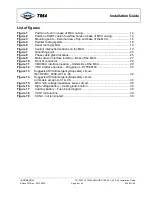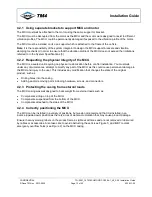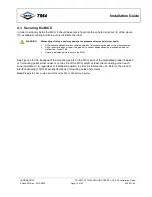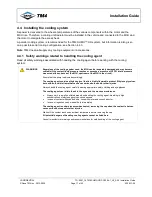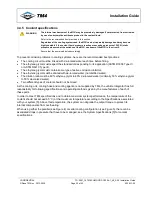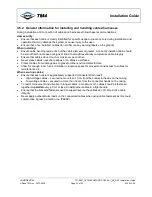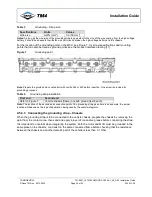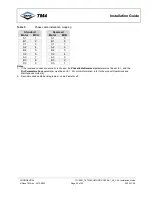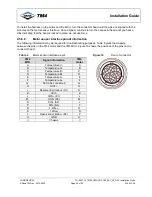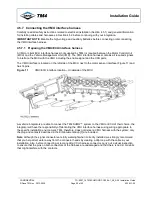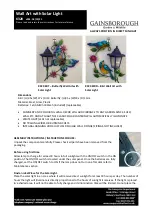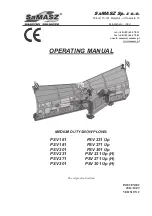
Installation Guide
CONFIDENTIAL
TG-0057_19 TM4 SUMO HD CO300-A1_A2_A2.5 Installation Guide
© Dana TM4 inc., 2013-2020
Page 20 of 42
2020-11-20
4.4.5 Coolant specifications
WARNING
The internal mechanisms of the MCU may be prematurely damaged if not protected from corrosion
by use of an automotive antifreeze product in the coolant liquid.
Refer to the recommended best practices in this section.
Regardless of the cooling system used, the MCU can be irreparably damaged and may become
highly unstable if the coolant liquid pressure reaches or exceeds a pressure of 30 PSI (static
pressure measured at the entrance of the MCU, upstream of the MCU in the circuit).
Ensure that the pump is adjusted accordingly.
To prevent corrosion problems in cooling systems, here are the recommended best practices.
•
The cooling circuit must be rinsed with de-ionized water each time before filling.
•
The ethylene glycol must respect the standard corresponding to its application (ASTM D3306 Type III
or ASTM D6210 Type III).
•
The ethylene glycol must contain some type of active corrosion inhibitors.
•
The ethylene glycol must be diluted with de-ionized water (not distilled water).
•
The dilution ratio must be 60% ethylene glycol to 40% de-ionized water (minimally 50% ethylene glycol
to 50% de-ionized water).
•
Two different types of coolant should not be mixed.
As the cooling unit, cooling hose and cooling agent are not supplied by TM4, the vehicle integrator has full
responsibility for following specifications and operating methods given by the manufacturers of each of
these parts.
In order to meet TM4 specifications and to obtain maximum system performance, the temperature of the
coolant should not exceed 65
°
C (or the maximum temperature according to the Specifications associated
with your system [5]. Above this temperature, the system can degrade the output torque to protect its
internal components from overheating.
When using either the parallel (see Figure 4) or serial cooling configuration (see Figure 5), there can be
associated drops in pressure that have to be managed; see the System Specifications [5] for coolant
specifications.

